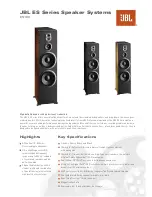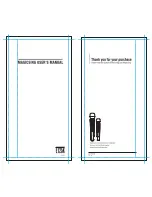
p44
Ver. 3.003 (24/4/03)
CONCEPT IQ. PLUS Programmer’s Manual.
The Telephone numbers are presented in the sequence:
Programming the Telephone Number Digits.
•
Primary number.
Multi-digit numbers are entered by pressing the <OFF> key.
•
Secondary number.
e.g. To program a #, Press <OFF>, 1, 1)
•
Call Divert (Call Forwarding) number.
•
Call Un-divert (Cancel Call Forwarding) number.
•
Callback number.
PRIMARY TELEPHONE NUMBER.
(UP TO 16 DIGITS)
When the system is required to report to a Central Station or a Telephone, this is the first Telephone number the Control Module will dial.
SECONDARY TELEPHONE NUMBER.
(UP TO 16 DIGITS)
If the Primary Telephone number fails, the dialer will then try the Secondary Telephone number.
If this fails the dialer will alternate between the two numbers until the “Maximum Attempts“ (Address 508) are reached.
CALL DIVERT (CALL FORWARDING) TELEPHONE NUMBER.
(UP TO 16 DIGITS)
Call Divert will only be activated if the Call Divert option is enabled in Address 891, Option 7.
A call forward number will be transmitted on the last Area to close.
A call un-forwarding number will be transmitted on the first Area to open.
e.g. Australia. Telstra: *, 2, 1, Phone number, #. Optus: *, 7, 8, Phone number.
Note: Call forwarding option must be enabled via Option 7 in Address 891.
CALL UN-DIVERT (CANCEL CALL FORWARDING) TELEPHONE NUMBER.
(UP TO 16 DIGITS)
e.g. Australia. Telstra: #, 2, 1, #. Optus: #, 7, 8.
ADDRESS
DEFAULT
FUNCTION
(Data Type)
500
501
502
503
Telephone number
digit to program:
Key/s to Press on LED
Terminal keypad:
Value displayed
on Zone Lamps:
0 to 9
<0> to <9>
0 to 9
*
<OFF>, 1, 0
10
#
<OFF>, 1, 1
11
Pause (4 Sec)
<OFF>, 1, 2
12
















































